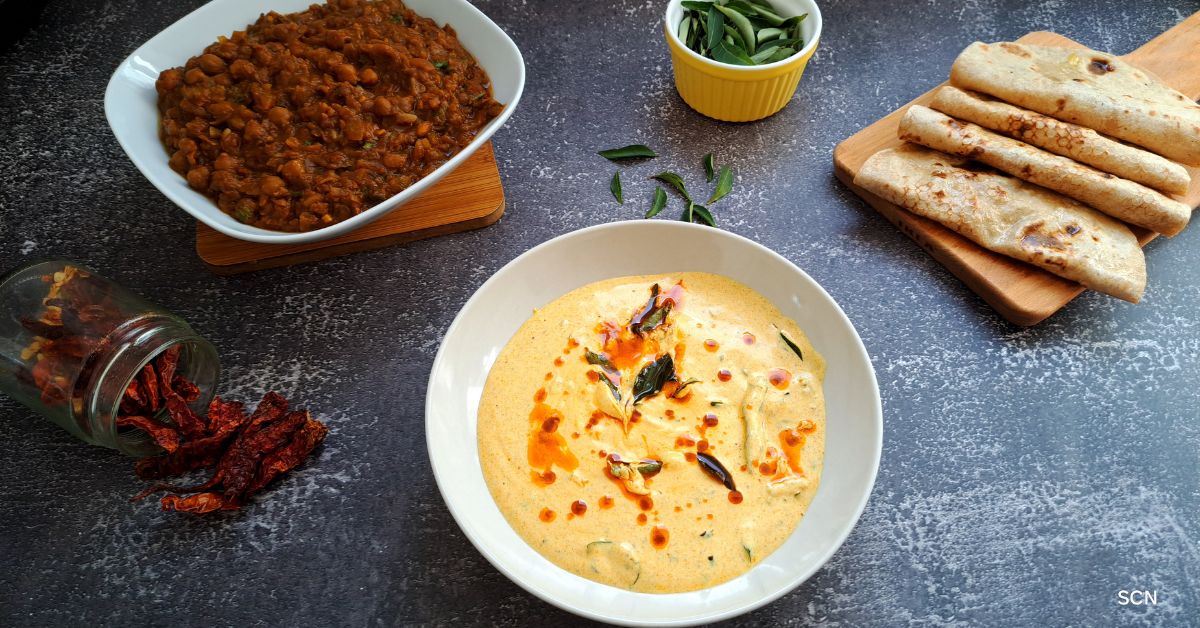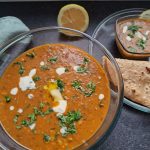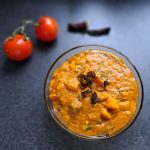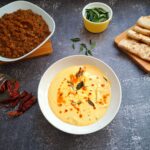Dahi fry

Dahi Fry is a simple yet flavourful Indian dish that features yoghurt as its main ingredient. It’s a comforting, creamy, and tangy dish that pairs perfectly with rice or flatbreads like chapati and naan. This dish is known for its ease of preparation and the rich, aromatic flavours that come from the use of spices.
At its core, it is a yoghurt-based curry. The yoghurt, also known as dahi, is cooked with a blend of spices that have been fried in oil or ghee. The word “fry” in the name refers to this frying process, which enhances the flavour of the spices and gives the dish its distinctive taste. Heat the yoghurt gently to maintain its creamy texture, and the result is a dish that’s both light and satisfying.
One of the best things about this dish is how quick and easy it is to prepare. It’s perfect for days when you want something light but satisfying. Since yoghurt is a cooling ingredient, this dish is especially popular in the summer, providing a refreshing contrast to the heat. However, its comforting flavours make it a year-round favourite in many Indian homes.
The Ingredients and preparation
The ingredients used are simple and commonly found in most Indian kitchens. The base is made from plain yoghurt, which is whisked until smooth. The tempering, or “tadka,” typically includes cumin seeds, dried red chillies, curry leaves, asafoetida and other spices. Fry these spices in oil or ghee until they release their flavours and become slightly crispy.
Making Dahi Fry is straightforward and quick. First, Whisk the yoghurt to remove any lumps. Then, fry the spices in oil or ghee to release their flavours. Add this to the yoghurt and cook gently to prevent curdling. The key to a good Dahi Fry is to cook the yoghurt slowly and carefully, ensuring that it stays smooth and creamy.
Serving Suggestions
Enjoy them with steamed rice, which complements the creamy texture of the yoghurt. It also pairs well with jeera rice (cumin rice) or simple pulao. For those who prefer bread, serve a soft chapati or a warm naan alongside. It is suitable for both lunch and dinner. Its light, refreshing taste makes it particularly popular during the warmer months. Its creamy, tangy flavour and aromatic spices make it a favourite in many Indian households. Whether you’re looking for a quick lunch or a light dinner, Dahi Fry is a wonderful choice.




Dahi fry
Ingredients
1 cup = 250ml
- 1 ½ cups plain yoghurt (dahi)
- 2 tbsp oil or ghee
- ½ tsp cumin seeds
- 1 dried red chilli broken
- ¼ tsp turmeric powder
- ½ tsp Kashmiri red chili powder
- ½ tsp coriander powder
- ¼ tsp asafoetida hing
- 1 tsp sugar optional
- 1 tbsp dried kasoori methi leaves
- 1- inch ginger finely chopped
- 1 clove garlic finely chopped
- Water as needed
- 1 sprig of curry leaves
- Salt to taste
- Fresh coriander leaves for garnish
Instructions
- In a mixing bowl, whisk the yoghurt until smooth.
- In a small bowl combine coriander powder, garam masala powder, Kashmiri red chilli powder, asafoetida, turmeric powder and salt. Mix well and set aside.
- Heat oil or ghee in a pan over medium heat.
- Add cumin seeds and let them splutter.
- Add ginger, garlic and saute until it turns golden brown. Add dried red chilli and curry leaves. Sauté for a minute until aromatic.
- Reduce the heat to low and add the spice mixture and saute. Don’t burn the masalas, sprinkle water if needed. Be careful while adding water as it may splutter.
- Now carefully add the yoghurt to the pan. Stir continuously to prevent the yoghurt from curdling. Add the sugar (if using), and dried Kasoori methi leaves. Combine well.
- If the gravy is too thick, you can add a little water to achieve the desired consistency.
- Cook for about 2 minutes until the yoghurt is just warm.
- Adjust salt and spices to taste.
- Garnish with fresh coriander or curry leaves.
- Serve the Dahi Fry hot, accompanied by steamed rice, jeera rice, or roti.
- Enjoy the tangy, spicy, and creamy flavours of Dahi Fry!
Notes
- Use fresh, thick yoghurt (dahi) for the best taste and consistency. Avoid sour yoghurt as it can make the dish too tangy.
- Whisk the yoghurt until it’s smooth and creamy. This helps in avoiding lumps and ensures a smooth gravy.
- Cook the yoghurt mixture on low to medium heat. High heat can cause the yoghurt to curdle. Once the yoghurt mixture is added to the pan, cook it only until it’s heated through. Overcooking can cause the yoghurt to split.
Frequently asked questions
Dahi Fry is a popular North Indian dish made with yoghurt (dahi) that is tempered with aromatic spices. It’s a flavourful, tangy curry that’s often served with rice or roti.
Yes, homemade yoghurt works perfectly for Dahi Fry. It often adds a richer flavour to the dish. Ensure that the yoghurt is not too sour for the best taste.
You can serve them with steamed rice, jeera rice, or any Indian flatbread like roti, naan, or paratha. It’s also great with a side of pickle or papad.
Dahi Fry is mildly spiced, but the level of heat can be adjusted according to your preference. If you like it spicier, you can add more green chilies or red chilli powder.
You can store them in the refrigerator for up to 2 days. Reheat it gently before serving, as overheating can cause the yoghurt to curdle.
If the yoghurt curdles, it may be due to overheating or using very sour yoghurt. To avoid this, always cook on a low flame and stir continuously. If it curdles, you can try blending the mixture to make it smooth again, although the texture may not be the same.
Yes, you can add vegetables like spinach, peas, or bell peppers to the dish for added nutrition and flavour. Cook the vegetables before adding them to the yoghurt mixture.
To make Dahi Fry thicker, you can reduce the amount of water added or simmer the curry longer until it reaches the desired consistency. Another trick is to add a bit of cornstarch or gram flour to thicken it.
Full-fat or Greek yoghurt works best for Dahi Fry as they provide a creamy texture and rich flavour. However, you can also use low-fat yoghurt if you prefer a lighter version.
To prevent curdling, use fresh yoghurt that is not too sour, cook on low heat, and stir continuously.
